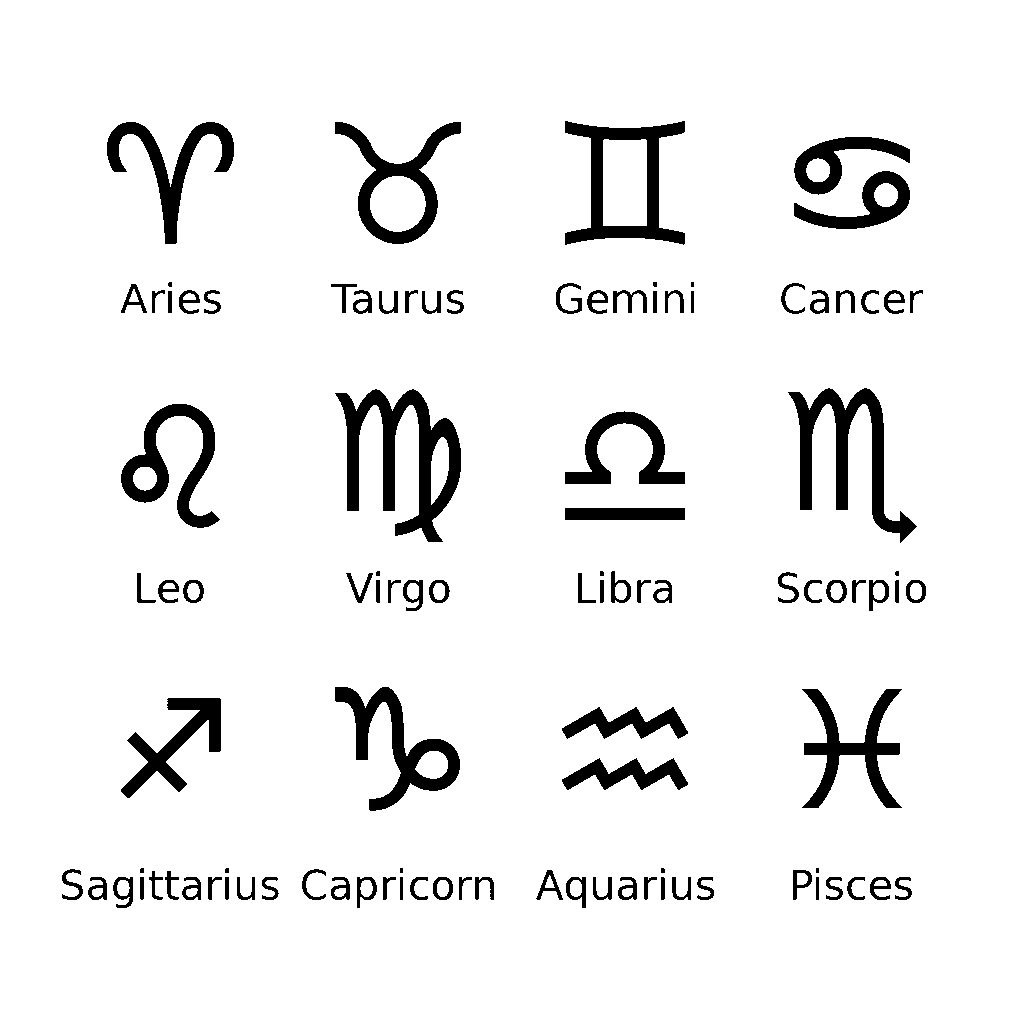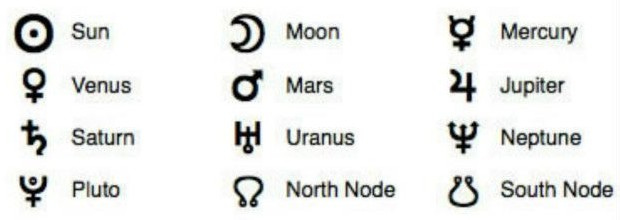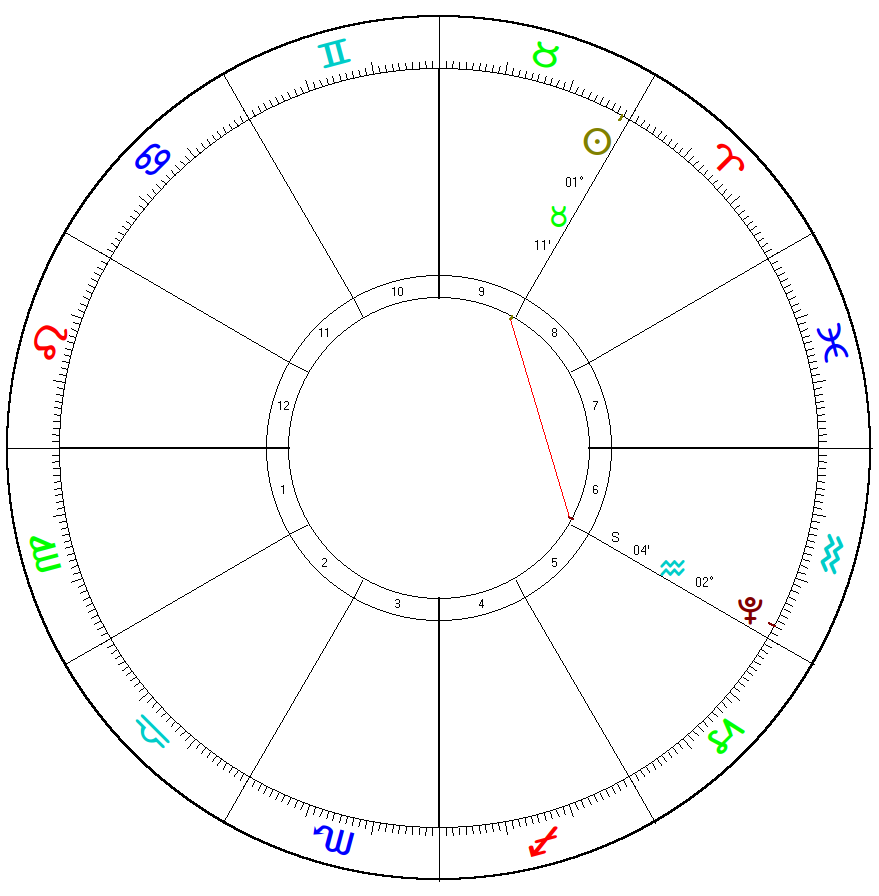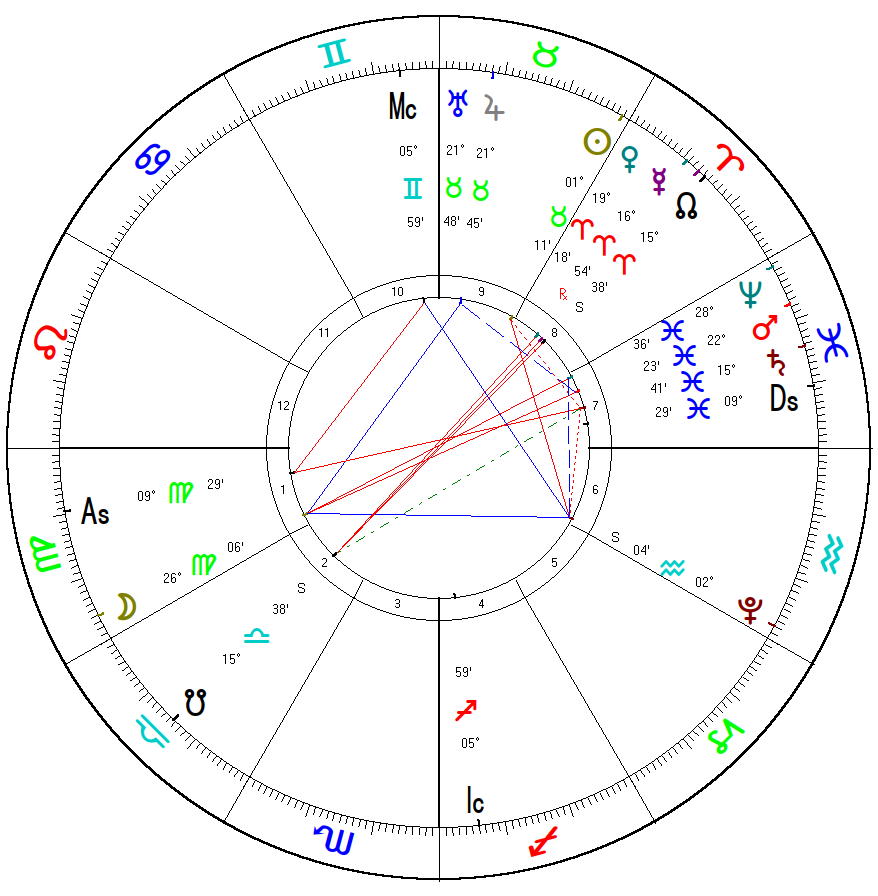Basic guide to astrology charts
The above image is an astrological chart – it shows the planetary positions for a precise moment in time and is the standard calendar view for astrological work. A basic level of familiarity with this chart is very helpful in following along with much of the work on this site, so please take a moment to familiarize yourself.
What you are looking at is a complete 360-degree circle – you’ll see tick marks in the outer ring marking each degree. The circle represents the sky from the perspective of someone on Earth – they would be standing in the center of the chart. There is a line across the center, marked “As” on one side and “Ds” on the other – that is the horizon line. Everything above that line is what is visible in the sky above at this moment and everything below is on the other side of the Earth, and not visible.
The 360-degree circle has been divided into twelve sections – each covers 30 degrees. They are named for a “zodiacal” sign which is indicated on the edge of each section using their respective symbols. To refer to a location in the sky you refer to that sign name and the degree within that sign. For example, the line “As” is marked at 9 degrees, 29 minutes, of the section named “Virgo.” The Moon, indicated with a familiar symbol, is at 26’06 in the same “Virgo” section of the sky. The Sun, another easily recognized symbol, is at 1 degree Taurus (typically we refer only to the degree and not the minutes). Each planet in the sky is indicated by a symbol that marks where each planet is at the moment shown in the chart.
In order to use the space efficiently, planets and signs are marked with their standard symbols – here are the symbols for the signs:

and here are the symbols for the planets:

As, Ds, Mc, and Ic are points in the sky known as the “angles.” These are marked with their abbreviations – As is the “Ascendant,” Ds is the “Descendant,” Mc is the “Midheaven” and Ic is usually just called “the IC.” These lines are roughly the horizon line and the top/bottom of the sky. They are important points, but you can disregard them for now.
In the middle of the chart you’ll notice a bunch of crossing lines – those are known as the “Aspects.” The aspect lines indicate when planets are at an angle with each other that is considered to be significant. For example, there is a red line connecting Pluto (2 Aquarius) to the Sun (1 Taurus). This tells you that they are ~90 degrees away from each other, which is known as a “Square” aspect. There are five “aspects” that are considered to be significant – Sextile (60 degrees), Square (90 degrees), Trine (120 degrees), Opposition (180 degrees) and Conjunction (not marked with a line – this means they are in the same degree). Sextile and Trine are shown in blue as they are considered to show ease of interaction whereas Square and Opposition are shown in red as they have more friction. The system has many rules and practices around aspects but for now you just need to know that it is significant when planets are in an angle with each other, and how to recognize what that looks like in the chart.
Next, on the inner ring you’ll notice that the sections are numbered in counter-clockwise order from 1-12. The planets are moving in counter-clockwise direction as well and that is the general way to read the “movement” in the chart. The 1-12 marks the number for each 30-degree section, and they are known as the “Houses.” 1 is the “First House,” 5 is the “Fifth House,” and so on. We’ll explain what they’re for later.
Finally, notice that next to the degrees/minutes sometimes you’ll see a little Rx symbol, or a letter S. The Rx means the planet is “retrograde,” which means it is moving backwards (clockwise) at that time, and the S means it is “stationing,” which is when it either changes from “direct” (normal) motion to “retrograde,” or from “retrograde” back to normal (direct).
OK, that’s all you of the basics you’ll need in order to follow along. Here’s the same chart again, but I’ve hidden everything except for what we talked about in the aspects section:

In astrologer-speak what you are looking at is the Sun in Taurus at 1 degree, squared by Pluto at 2 Aquarius, stationing. Pluto is in the 6th house, and Taurus is in the 9th.
Great job reading the chart – the part that took me the longest was memorizing the symbols. Now that you can read the Calendar you’ll be able to follow along when the Astrologer, using the System, explains what this tells us about the time shown by this calendar chart. Preview: it’s major!

Leave a Reply